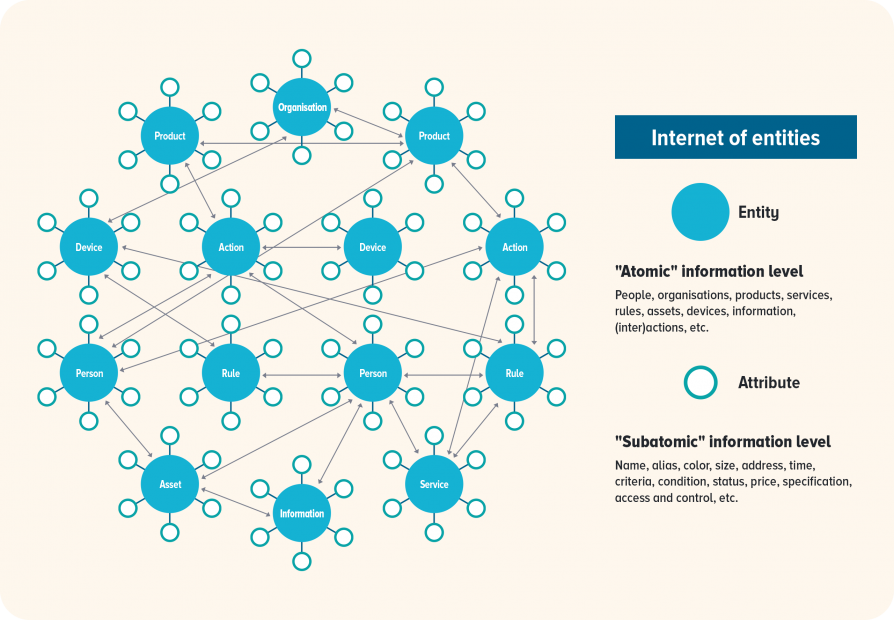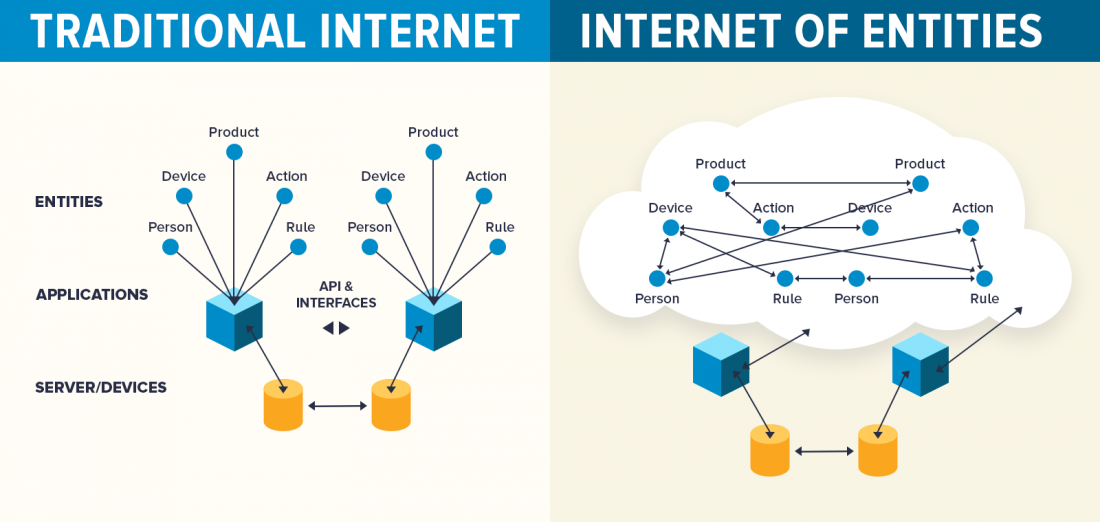


The Internet of Entities
How – The Internet of Entities
1LANGUAGE is part of a larger initiative, the “Internet of Entities”. The Internet of Entities seeks to make the world connect and interact in line with natural design principles that 'unite' as opposed to many human applied design principles that 'divide'. 1LANGUAGE is the part of the Internet of Entities that focuses on uniting all languages as well as enabling man to machine communication (uniting human language and machine language).
In a nutshell, nature communicates and exchanges information and value according to molecular, atomic and quantum structures and design principles. When we apply the same structure and design principles to information, a completely new internet and value exchange system emerge that appear more valuable, sustainable and robust than what traditional language, the traditional internet and traditional economics are offering today.
Starting at an atomic information level, the Internet of Entities uses 'the entity' as the 'information atom'. An entity can be anything, a person, organisation, product, service, asset, device, an idea, a rule, transaction, event or a group of entities as an individual group. As long as it 'is' distinctively identifiable, even conceptually, it is or can be an entity. Please, pay close attention to the word 'is'. The term 'entity' is derived from the Latin verb esse, which means 'to be'. An entity exists distinctively. The Internet of Entities can be considered an Internet of Being.
Similar to atoms' ability to combine into a molecule, also entities can be combined into meaningful relations:

At subatomic level, or quantum level, the entities are provided with meaning by using attributes such as name, type, class, color, height, volume, nationality, price, location, date, time, status, ownership, relationship and so on.
Fundamentally, we can see the traditional internet as an Internet of Applications. On the traditional internet, information is defined, created, managed and stored in the context of an application. Applications can only exchange value and information with each other when there is some 'translation software', frequently an Application Programming Interface (API). The application typically uses identifiers to identify someone or something (an entity). The first problem arises that when you and I use two different applications, describing the same client or product, we are probably using two different identifiers for the same subject or object. Moreover, we use different data definitions. What I may call a client, you may call a customer and so on. If we speak different languages or invite more applications into our ecosystem, the challenge for uniting meaning and value is growing rapidly more complex.
1LANGUAGE is a meta-language and aims to provide a common reference of data definitions that are contextually defined in many languages. When applications use these (precise) data definitions, they can interact with each other, regardless of the language that was used to express the information. Rather than working in an application constraint environment with intra-application interpretations and translations, we can start working in a virtual network, where everyone in their own language can interact with.

What makes the Internet of Entities unique is that its attributes are broken down into their smallest contextual meaning. It is here, when we dive into meaning at quantum level that we start witnessing true magic. When information is defined into its smallest contextual meaning (referred to as hyperstructured information or quantum semantics), it can be interpreted by other information. Such interpretation allows for information to meaningfully interact on a stand alone basis with other information, generating knowledge or information autonomously, like the car speed of the car in the previous example.
To get a deeper understanding of the functionality of the Internet of Entities, hyperstructured information and quantum semantics please read the other 'How' sections on this website or contact us with your specific question(s).
